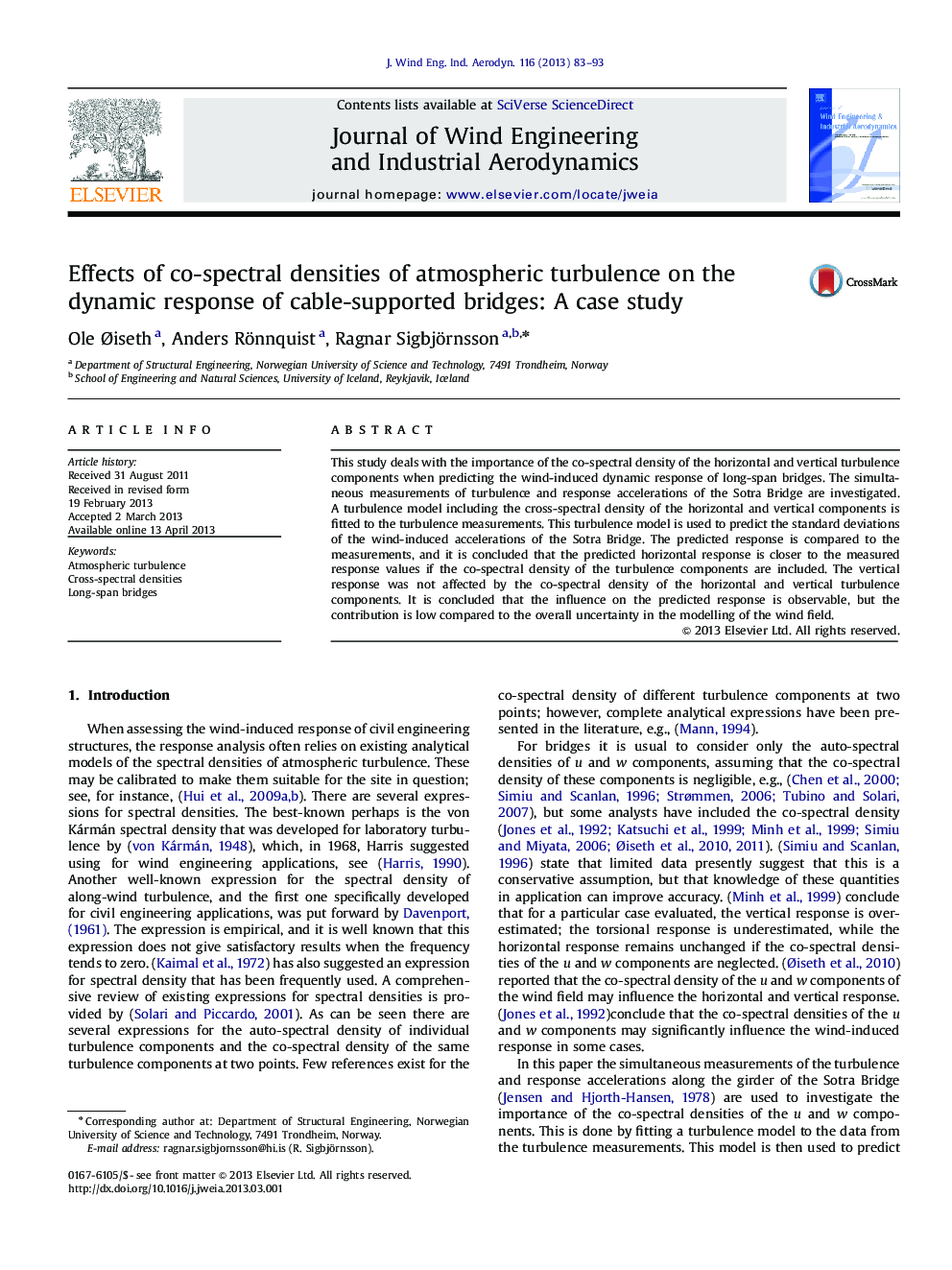| کد مقاله | کد نشریه | سال انتشار | مقاله انگلیسی | نسخه تمام متن |
|---|---|---|---|---|
| 293047 | 511101 | 2013 | 11 صفحه PDF | دانلود رایگان |

This study deals with the importance of the co-spectral density of the horizontal and vertical turbulence components when predicting the wind-induced dynamic response of long-span bridges. The simultaneous measurements of turbulence and response accelerations of the Sotra Bridge are investigated. A turbulence model including the cross-spectral density of the horizontal and vertical components is fitted to the turbulence measurements. This turbulence model is used to predict the standard deviations of the wind-induced accelerations of the Sotra Bridge. The predicted response is compared to the measurements, and it is concluded that the predicted horizontal response is closer to the measured response values if the co-spectral density of the turbulence components are included. The vertical response was not affected by the co-spectral density of the horizontal and vertical turbulence components. It is concluded that the influence on the predicted response is observable, but the contribution is low compared to the overall uncertainty in the modelling of the wind field.
► Full scale wind data are processed using systems approach.
► Spectral analysis based on parametric time series modelling is applied.
► Cross-spectral densities and coherences of turbulence components are given.
► Spatial structure of the wind field for large separation distances is presented.
► Effects of the spatial structure of turbulence on the structural response are discussed.
Journal: Journal of Wind Engineering and Industrial Aerodynamics - Volume 116, May 2013, Pages 83–93